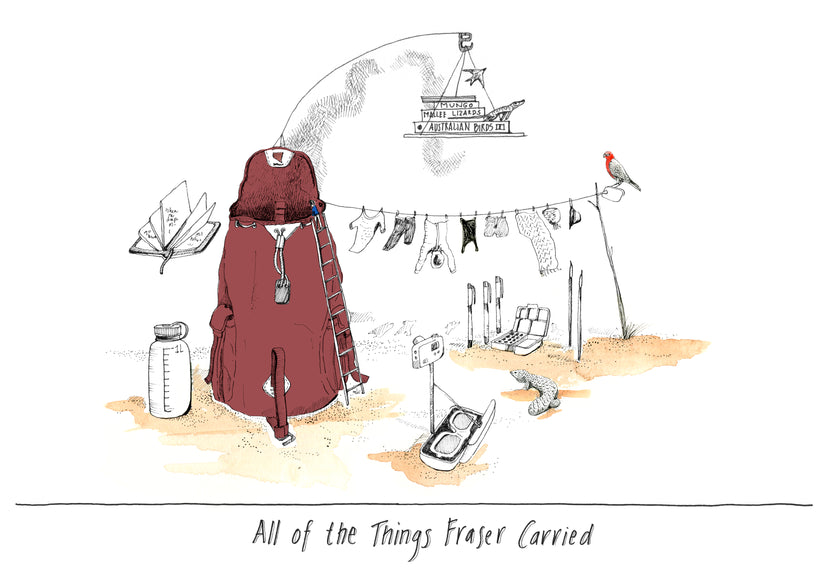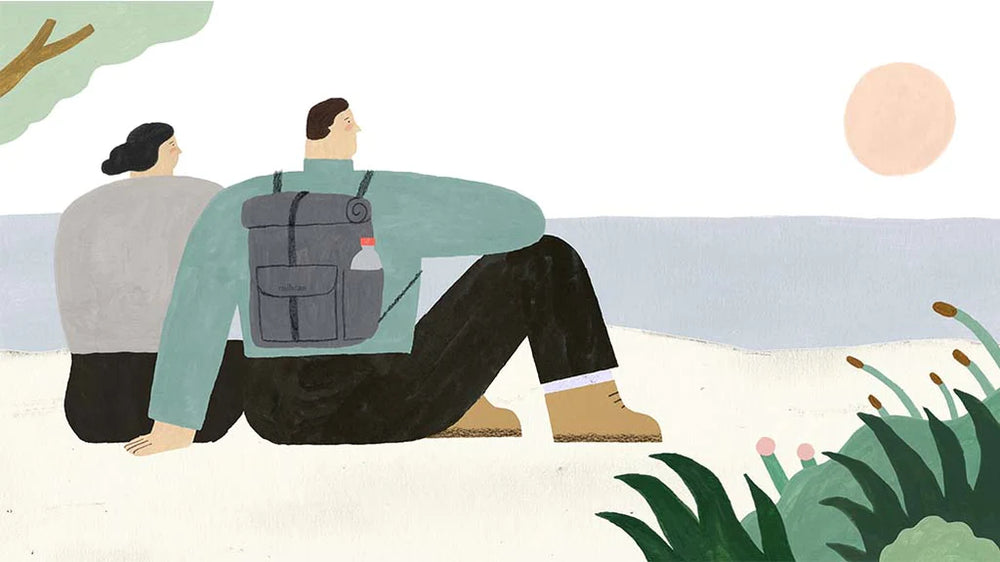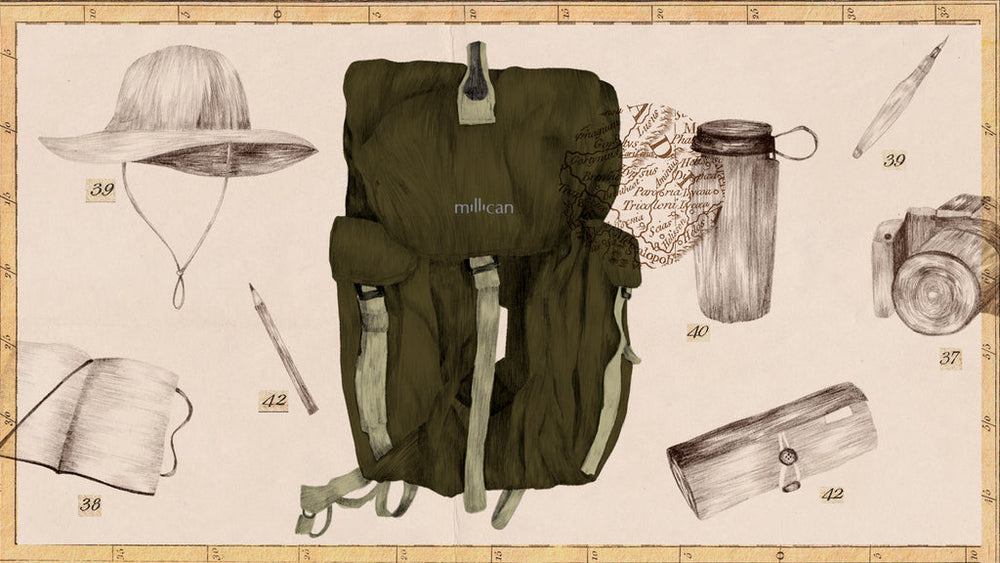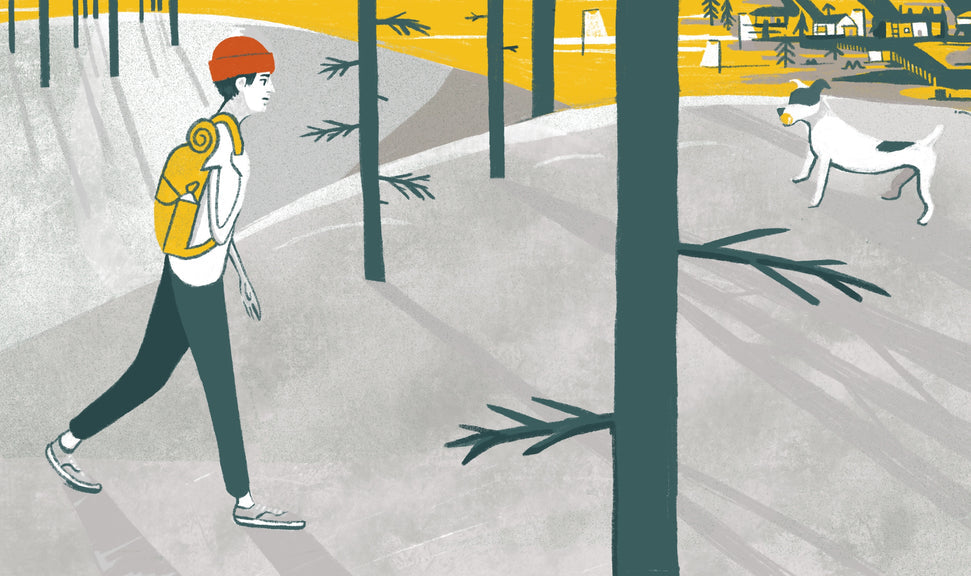I had only recently received my Fraser the Rucksack and was looking forward to our first outing together. Actually, we had already got to know each other a bit – had been to get the groceries at the market, picked up some drawing prints, and made a couple of trips to the post office, but I was looking forward to our first so-called ‘adventure’ away from the city. A date was set and a fitting destination decided upon.
Illustrations &; words by Alex Hotchin | @alex_hotchin
I found that everything I needed for this five-day adventure fitted perfectly in Fraser. In fact, it’s a deceptively big bag and tall of stature. It swallowed all of the clothing I would need for both hot day, and cold nighttime temperatures, drawing, recording and photographing materials, and sustenance to survive in such a dry environment.
With Fraser packed we loaded up the van and drove some 700km’s north-west from Melbourne to a place called Lake (Thitakara) Mungo, in New South Wales, Australia. It’s a place where one gets a true feeling of being in the outback of Australia, and a place of world heritage significance.
Mungo National Park was once a lake some 40,000 years ago but exists today as a huge dry expanse of blue bush and saltbush plain that stretches as far as the eye can see. To the eastern side lays the Lunette - an exquisite collection of sculptured shapes rising from the edges of the lake. The lunette is made up of multiple layers of sand and silt, which over thousands of years has been eroded away to leave these modern-day shapes. The Walls Of China as it’s known - is a place on the move. The prevailing westerly winds create the mechanism to shift the sand and clay and keep it all moving in an easterly direction of one and a half metres a year. In its wake, it reveals fossilised evidence of life as it existed up to 50,000 years ago of the Indigenous Australian people who thrived while hunting, fishing and living alongside this once great lake. We hear stories that have been passed down from this time to the present day. Ivan tells us that the Aboriginal people look to the night skies for the shape of an emu in the Milky Way, and when it appears they know it is time to go hunting for emu eggs. We behold the age of this story as we hold a 20,000-year-old piece of emu eggshell in the palm of our hands. For some reason, I expect something so old to be heavy, but it was as light as a feather.
Our next few days involve walking short sections of the park, listening to stories of the indigenous elders and meeting some of the present-day resident birds, reptiles and mammals.


While listening, watching and hearing, Fraser the Rucksack was there and carried everything I needed to record, sketch, write and photograph this amazing landscape we were in. Knowing that I had found my bag that will last the test of time was a real comfort, as I ventured around one of the oldest places on the planet. There are many things I like about this bag and it’s hard to choose my favourites.

Fraser is beautiful and feels considered in its design and construction, and I fully expect that it will accompany me on many more adventures.





